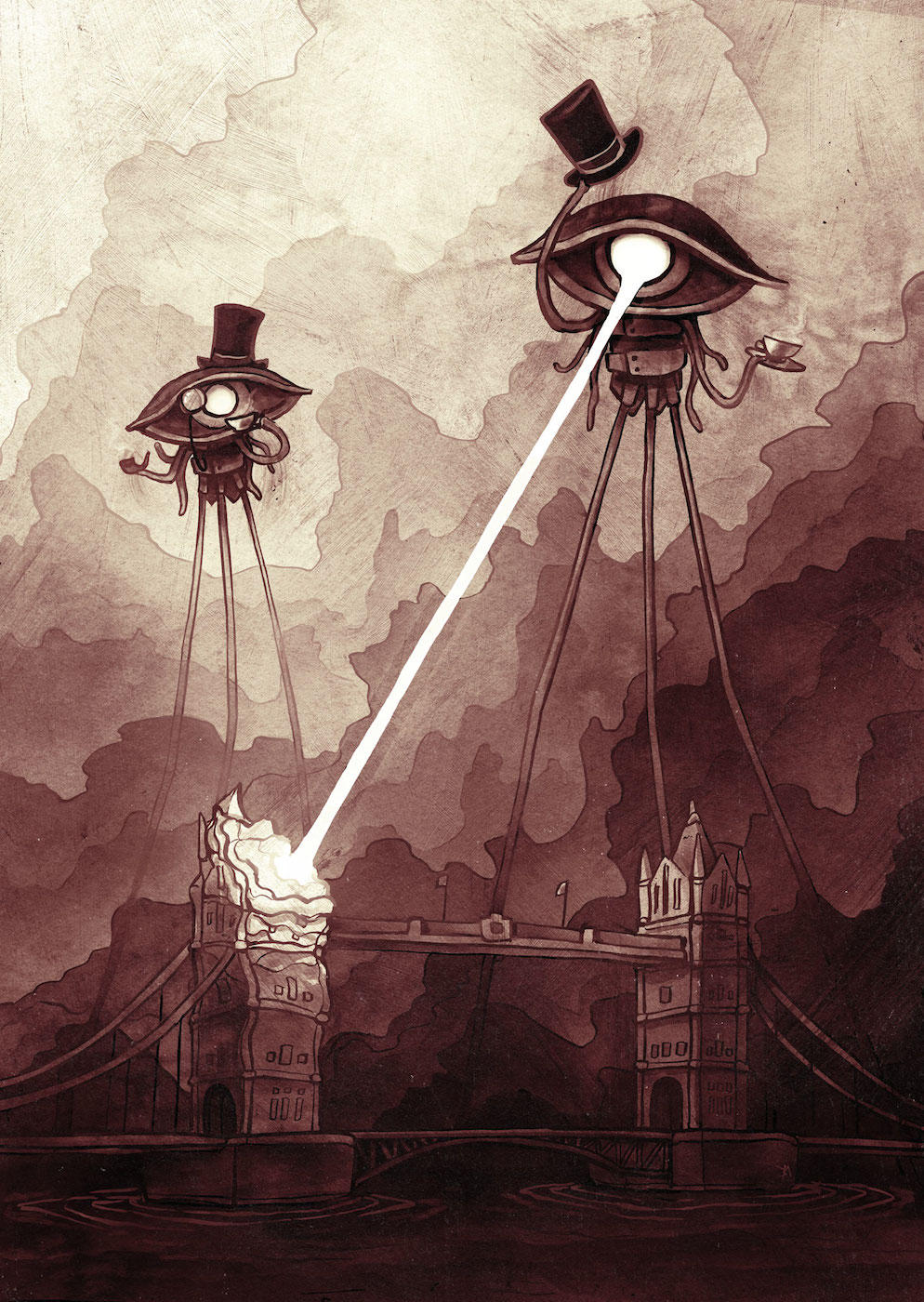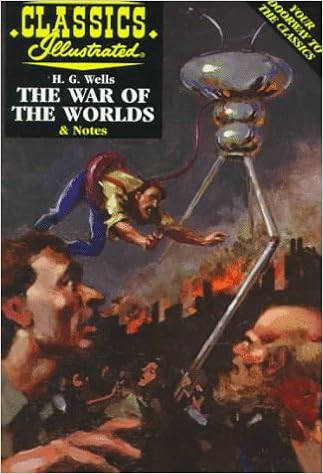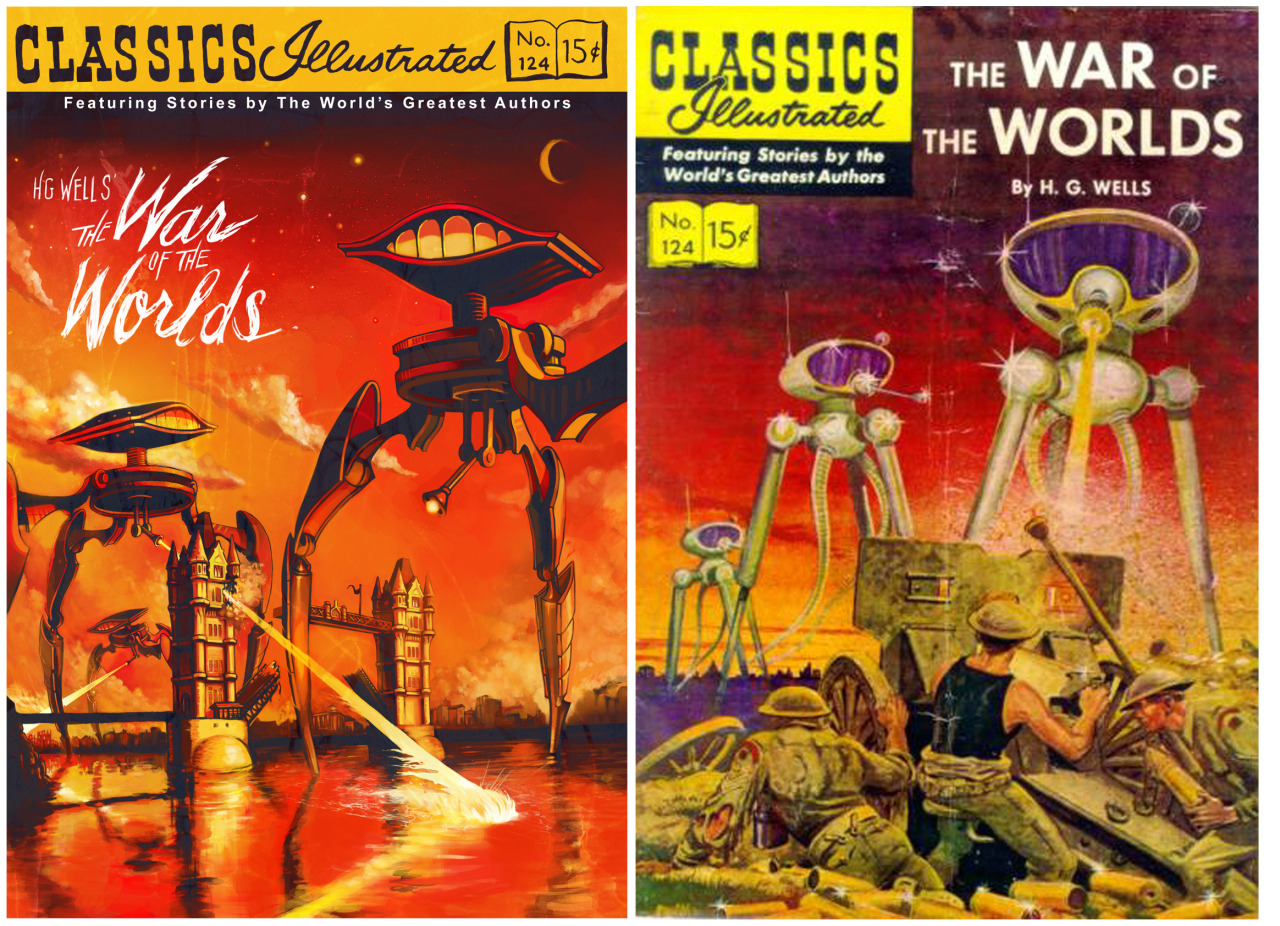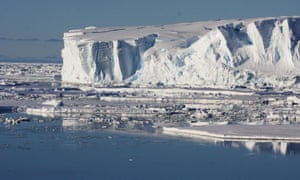Thinking Weirdly with China Miéville
JANUARY 13, 2018
No matter how commodified and domesticated the fantastic in its various forms might be, we need fantasy to think the world, and to change it.
— China Miéville
Art and Idea in the Novels of China Miéville
Published 09.07.2015
194 Pages
¤
CHINA MIÉVILLE IS one of the most inventive writers of contemporary science fiction and fantasy literature. Since the publication of King Rat in 1998, Miéville has consistently produced imaginatively complex and narratively rich worlds that eschew literary trends and generic traditions. Anyone familiar with his work knows that much of the pleasure of reading Miéville’s novels stems from the ways that he continually evokes and then rapidly departs from the genres from which he draws. Miéville doesn’t follow generic traditions as much as he unravels them, playfully remixing and remaking the possibilities of the fantastic by combining it with elements from science fiction, Gothic, urban fantasy, detective stories, and Lovecraftian horror. Refusing to simply follow established trends, Miéville’s fiction combines and repurposes genres and tropes in order to find new ways of representing and imagining the world.
Miéville’s generic boundary-crossing is more than simply a stylistic approach; it is also a political commitment “to think the world, and to change it.” What distinguishes Miéville as a writer is the way that his novels utilize the imaginative potential of fantastic fiction to engage with social and political reality. In interviews, Miéville has situated his novels as post-Seattle literature, and his writing responds to what the late Mark Fisher has termed capitalist realism, “the widespread sense that not only is capitalism the only viable political and economic system, but also that it is now impossible to even imagine a coherent alternative to it.” For Miéville, the radical potential of the fantastic lies in its ability to conceptualize a world beyond reality as presently constructed. Miéville uses fantasy in a way that makes the familiar appear strange and that challenges the stability of the present. By constructing fantastical worlds that continually thwart established rules and expectations, Miéville’s novels unmask the limitations of social imagination and hold open the utopian possibilities of imagining the world otherwise — of conceptualizing “the not-this-ness of this” (as he puts it in Iron Council).
The recent publication of two books on Miéville testifies not only to his relevance to modern fiction, but also to the political importance of fantastic literature to contemporary culture. Carl Freedman’s Art and Idea in the Novels of China Miéville and Caroline Edwards and Tony Venezia’s edited collection China Miéville: Critical Essays both draw attention to Miéville as an important contemporary literary figure and as a critical thinker whose novels engage with wider concerns of genre, politics, and the imagination. Choosing to write about a figure like Miéville is no easy task. As Edwards and Venezia note in their introduction, given Miéville’s rapid rate of productivity (since the publication of these books, Miéville has released two novellas, a short story collection, and a nonfiction account of the Russian Revolution), as well as his own theorization of the genre, Miéville “always seems to be two steps ahead of his critics.” However, through their exploration of the literary and political significance of Miéville’s fiction, both Art and Idea and China Miéville: Critical Essays provide fascinating and engaging analyses of Miéville’s novels that remarkably integrate their textual and theoretical elements. Together, both works point to the ways that fantastic literature can help to imagine alternatives to the enclosing realities of contemporary capitalism.
Freedman’s Art and Idea is the first full-length investigation of Miéville’s fiction, and Freedman truly takes advantage of the extended room to discuss the interconnections across his work. To do this, Freedman provides close-readings of Miéville’s first six adult novels (excluding Kraken), along with a final chapter that explores Miéville’s academic work on international law and its relation to genre. Readers familiar with Freedman’s earlier work, including his influential Critical Theory and Science Fiction, will not be surprised that Freedman is drawn specifically to Miéville’s Marxist connections. For Freedman, Miéville is preeminently a “Marxist novelist — with equal emphasis on the adjective and the noun.” Adopting this approach, Freedman provides thorough readings of Miéville’s novels that expertly weave together their political and literary antecedents. In addition to detailing the common tropes that appear throughout his novels, Freedman draws attention to Miéville’s generic hybridity as a radical form of dialectical thinking that demonstrates the power of fantastic fiction to critique late capitalism.
Throughout Art and Idea, Freedman exhibits a nearly inexhaustible grasp of Miéville’s literary allusions and generic connections, which assists him in making some rather astute observations. In the first chapter, Freedman discusses Miéville’s first novel, King Rat, as a Marxist urban sublime. By this, Freedman refers to the tradition of London urban narratives established by writers such as Wordsworth, Blake, and Dickens, who conceptualized 19th-century industrial London as an estranging, inhuman metropolis. However, whereas these earlier writers’ use of the sublime was associated with the rural and realism, Miéville combines realism with elements of the fantastic to present London as “a place of epistemological nontransparency and hybridity.” Reading the novel within the context of Thatcherite Britain, Freedman highlights the ways that Miéville’s novel comments on late capitalist enclosure. Treating the novel’s half-human, half-rat main character Saul as a symbol of dialectical hybridity, Freedman argues that the novel ultimately provides a “celebration of heterogeneity and complexity, of overdetermined dialectical combination, and correlatively, an attack on the totalitarian and (in the end) genocidal ideal of purity.”
Freedman expands this discussion through compelling readings of each book of Miéville’s New Crobuzon trilogy (Perdido Street Station, The Scar, and Iron Council), which form an interconnected narrative of anti-capitalist, anti-fascist revolution. When it comes to praising the series, Freedman is not one to mince words. The New Crobuzon series is “the most convincingly detailed and full realized alternative world yet created in modern fiction” — even more so than J. R. R. Tolkien’s The Lord of the Rings series, which is “nugatory,” “impoverished,” and “a mile wide but only an inch deep.” Such claims are not merely evaluative, however, but rather a statement on the scale and complexity of Miéville’s world-building. In the first book of the series, Perdido Street Station, Miéville provides an allegorical tale of capitalist overthrow. The novel’s slake-moths represent what Steven Shaviro terms capitalist monsters, horrific figures that mirror capitalism’s incessant need to drain the labor and potentiality of its victims. However, once again drawing inspiration from Miéville’s political figurations, Freedman examines how Miéville’s main narrative of romantic love imagines a utopian portrait of “distinctness without domination” that reverses capitalism’s erasure of difference. Similar ideas underlie his discussion of The Scar, which pictures an egalitarian community that contrasts the capitalist imperialism of the city of New Crobuzon. Analyzing the novel alongside the sea stories of Herman Melville and Joseph Conrad, Freedman reads The Scar’s pirate colony as a partial utopia that provides the most democratic social formation possible at the time.
Freedman’s skilled readings of Perdido Street Station and The Scar set up his discussion of the trilogy’s final novel, Iron Council. Whereas the previous novels fell short of genuine political revolution, Iron Council provides Miéville’s most complete image of anti-capitalist uprising. In this chapter, Freedman truly shines as a critic as he skillfully connects the narrative to real-world socialist and anti-capitalist movements while simultaneously locating the novel within the conditions of late capitalism. In Freedman’s reading, Miéville uses speculative figures that preserve the possibilities of utopian revolution in a world increasingly hostile to socialist resistance. As he writes:
The setting of this revolutionary novel in a fantastic world implicitly recognizes, in its generic structure, the unavailability of socialist revolution in the immediate empirical world; and the use, in Iron Council, of magical devices […] as a series of utopian signs — or figures, or placeholders — for social forces whose precise nature cannot yet be identified but which must in some way be posited if the ultimate ideal of revolutionary social justice is to be maintained. The basic project of Iron Council, in other words, is to keep hope alive, to insist upon the horizon of socialist revolution even in the current absence of entirely specific particulars that could define the latter.
According to Freedman, Miéville’s novels provide fantastical figures that hold open the possibilities of anti-capitalist resistance. For example, by concluding with the image of a “frozen train” headed back to the city of New Crobuzon, Iron Council’s ending preserves the utopian impulse that narrative resolution typically forecloses. By refusing to follow the common fantasy trope of returning the fictive world to its “original,” pure state — by concluding the novel before the revolution has taken place — Miéville draws attention to the real-world social and political resistance necessary to bring a utopian world into existence.
Freedman continues his analysis through discussions of nationalism and ideology in The City & the City and language in Embassytown. In the final chapter, Freedman develops a theoretical approach to Miéville’s fiction that links it to Darko Suvin’s categorization of science fiction as a genre of “cognitive estrangement.” The chapter reviews Suvin’s criticisms of fantasy as a reactionary genre, then highlights how Miéville undermines fantasy’s regressive tendencies by constructing fantastical worlds that explore social and political reality. According to Freedman, literature provides knowledge of the “lived experience” of everyday existence by offering images that help to understand what it is like to live within a specific time and place. By using signs and placeholders that mirror real-world situations, Miéville’s novels provide allegorical and speculative figures that illuminate the felt realities of late capitalism. What distinguishes Miéville from writers such as Tolkien is that Miéville “incorporates so many of the forces — from the most public forms of imperialist violence to the most ‘private’ of sexual desires — that drive actual history.” Rather than nostalgically receding from reality like Tolkien, Miéville’s fantastical figurations establish historical concreteness by identifying the social and political structures that shape our experiences of life under late capital.
Through these complex readings of Miéville’s novels, Freedman’s Art and Idea provides a substantial contribution to critical studies of Miéville’s fiction — a mighty task given the large amount of research his work has already received. Freedman works best when he is elucidating the Marxist elements of Miéville’s novels; however, when he abandons this, such as his discussion of language in Embassytown, his analysis slightly falters. As well, although I understand the need to set limits on any collection — especially on such a prolific writer as Miéville — it is disappointing not to see Freedman tackle a novel like Kraken, which could truly benefit from Freedman’s touch. However, as a whole, Freedman’s thorough readings of Miéville’s generic and theoretical influences sets a high bar for critical explorations of Miéville’s fiction and is sure to become essential reading to all future discussions of his work.
In many ways, Edwards and Venezia’s China Miéville: Selected Essays picks up where Art and Idea leaves off by considering Miéville’s novels within the realm of Marxist literary criticism, while also opening up alternate approaches to reading his fiction. The collection begins with a preface by Miéville that ruminates on disavowed literature. This is followed by an introduction by Edwards and Venezia — or what they call an “unintroduction” — which provides a magisterial overview of Miéville’s works. Their lengthy and comprehensive essay begins with a discussion of Miéville’s connections to Marxism and the New Weird, then reads his work in line with post-genre theory, the grotesque, actor-network-theory, Surrealism, and the “psychogeography” of the Situationists. Their introduction is also notable for discussing several of Miéville’s lesser-known works, including his short stories and his nonfiction booklet London’s Overthrow. As one of the most complete and thorough introductions to Miéville’s work, I believe that it will provide valuable insights to both new and longtime fans.
Not surprisingly, several of the collection’s articles focus on the political significance of Miéville’s fiction. In her standout essay “Fractal Language and Social Change,” Sherryl Vint examines Miéville’s novels through the lens of ab-realism — that is, “a narrative logic that simultaneously captures the absurdities of ‘real’ life under capitalism and points to the power of narrative to activate the utopian traces of another world that is possible and coexists with this one.” Building on Miéville’s claims that fantasy and science fiction mirror the estranging experiences of life under capitalism, Vint skillfully reads the use of metaphors across Miéville’s texts to examine how they create tension between realist and fantastic figuration, which enables them to refer to — and transcend — concrete historical reality. Though not explicitly engaging with Freedman’s ideas, Vint’s analysis provides a counterpoint to his readings by highlighting the imaginative potential of Miéville’s work. In Vint’s analysis, the dual meaning of Miéville’s figures enable them to point to present reality while simultaneously alluding to a utopian world outside of the capitalist present. Vint’s superb analysis of the complexity of Miéville’s work offers a remarkable contribution to the collection and establishes a firm foundation for grasping the social and political significance of Miéville’s use of the fantastic.
Vint’s conception of ab-realism closely connects with essays by Dougal McNeill and Mark P. Williams, which similarly explore the political significance of Miéville’s novels. In “Failing Better: Iron Council, Benjamin, Revolution,” McNeill considers Iron Council in relation to the anti-capitalist and anti-globalization movements. McNeill argues that Miéville’s novel constructs a portrait of the revolutionary impulse within a historical present where radical upheaval is almost impossible. For McNeill, the most valuable element of Miéville’s fiction is his portrait of a heterodox revolution that highlights the unified aspects of revolutionary struggle. In doing so, Miéville draws attention to the possibilities of global, interconnected resistance. Similarly, in “Abnatural Resources: Collective Experience, Community and Commonality from Embassytown to New Crobuzon,” Williams considers the ways that communal forms of creativity are represented within Miéville’s novels. Williams terms this abnatural resources, “fantastic extensions of actual cultural practices which reveal shared or communal resources which are not instrumental to capitalism.” Williams nicely reads this theme within several of Miéville’s novels to demonstrate how communal forms of activity, such as art, music, and labor, can contribute to wider social and political transformations.
Several essays also consider Miéville’s revision of common fantasy tropes and conventions. In “‘Blatantly Coming Back’: the Arbitrary Line Between Here and There, Child and Adult, Fantasy and Real, London and UnLondon,” Joe Sutliff Sanders discusses how Miéville’s youth novel Un Lun Dun reworks the “return-to-reality” trope common to adolescent fiction. Beginning with an exploration of this motif in C. S. Lewis’s Narnia series, Philip Pullman’s His Dark Materials trilogy, and Neil Gaiman’s The Graveyard Book, Sanders highlights how this trope relies on a binaristic opposition between fantasy and mimesis, which privileges the socially constructed “real.” In breaking down this division, Sanders points to the ways that Miéville’s novel, as well as his entire oeuvre, help to undermine the ideologically-laden tropes of genre fiction. Raphael Zähringer’s essay “‘Strange Tricks of Cartography’: The Map(s) of Perdido Street Station” provides a much-needed exploration of maps in Miéville’s novels. In much fantasy fiction, the map serves as a way for readers to navigate space; however, in his insightful reading, Zähringer demonstrates how Miéville problematizes the use of maps by treating them as sites of imperial power that both “inform and misinform” characters’ and readers’ grasp of physical space. Paul March-Russell provides an in-depth exploration of the trope of invisibility in The City & the City and Christopher Priest’s The Glamour. March-Russell’s detailed discussion shows how invisibility in The City & the City functions as a way to examine the political process of disavowal that shapes discourses of nationalism.
Additional essays take Miéville into less-explored directions with somewhat mixed results. Matthew Sangster nicely highlights the ways that generic conventions impact readers’ appreciation of Miéville’s novels. Sangster examines this through Goodreads reviews of the New Crobuzon trilogy to show how the series’s loosely connected and stylistically distinct narratives shape readers’ opinions of the novels. Contrasting New Crobuzon with Jeff VanderMeer’s Ambergris series and Neal Stephenson’s Baroque Cycle, Sangster notes how the generic hybridity of Miéville’s trilogy, particularly Iron Council, upset readers’ reception of the text. As Sangster notes, “Ironically, having enjoyed the [generic] subversions in the previous two books can make readers less open to the rather different subversions offered by Iron Council, which, as a novel, fails to settle into the comfortable pattern but instead radically expands on the possibilities of the world of Bas-Lag.”
Some other entries, however, seem a bit disconnected from the collection’s overall focus. Ben de Bruyn’s intriguing, though slightly underdeveloped, essay examines the way that creative writing functions within Miéville’s novels, and highlights how Miéville’s novels inherently critique the institutionalization of academic creative writing programs. De Bruyn’s essay draws attention to a key unexplored area of Miéville’s novels; however, his essay lacks the theoretical and political approach established in the rest of the collection. Anthony F. Lang Jr. examines the interconnections between Miéville’s academic work on international law (published as Between Equal Rights: A Marxist Theory of International Law) and representations of state power in The City & the City and Embassytown. While Lang provides an informative discussion of Miéville’s legal theory, at times the connections to his novels feel a little programmatic. Finally, in the book’s afterweird, Roger Luckhurst provides a satirical take on the weird that concludes with a insightful exploration of the difference between the old weird and new weird.
Although some of the essays are a bit uneven, China Miéville: Critical Essays’s attention to the diversity of Miéville’s fiction, as well as its insistence on the political significance of his work, makes this collection vital to the growing body of critical research on Miéville. As a whole, it provides many noteworthy essays that establish a firm base for understanding the complexity of Miéville’s fiction and highlights the wealth of ideas Miéville’s novels inspire. Like Art and Idea, Edwards and Venezia’s China Miéville: Critical Essays is a thorough exploration of Miéville as both a novelist and a critical thinker whose works highlight the imaginative dimensions of fantastic fiction. Taken together, both books lay the groundwork for understanding the radical possibilities of fantastic fiction and highlight the genre’s potential to inspire the social and political movements needed to conceptualize ways out of the dead end of capitalist realism.







![Platform Capitalism (Theory Redux) by [Srnicek, Nick]](https://images-na.ssl-images-amazon.com/images/I/51YpzWtmYkL.jpg)


